WCF Data Contracts define the contract between client and server over what will be exchanged. Here we will go through creating a WCF service and consuming it, noting the data contracts.
First, create a new WCF project:
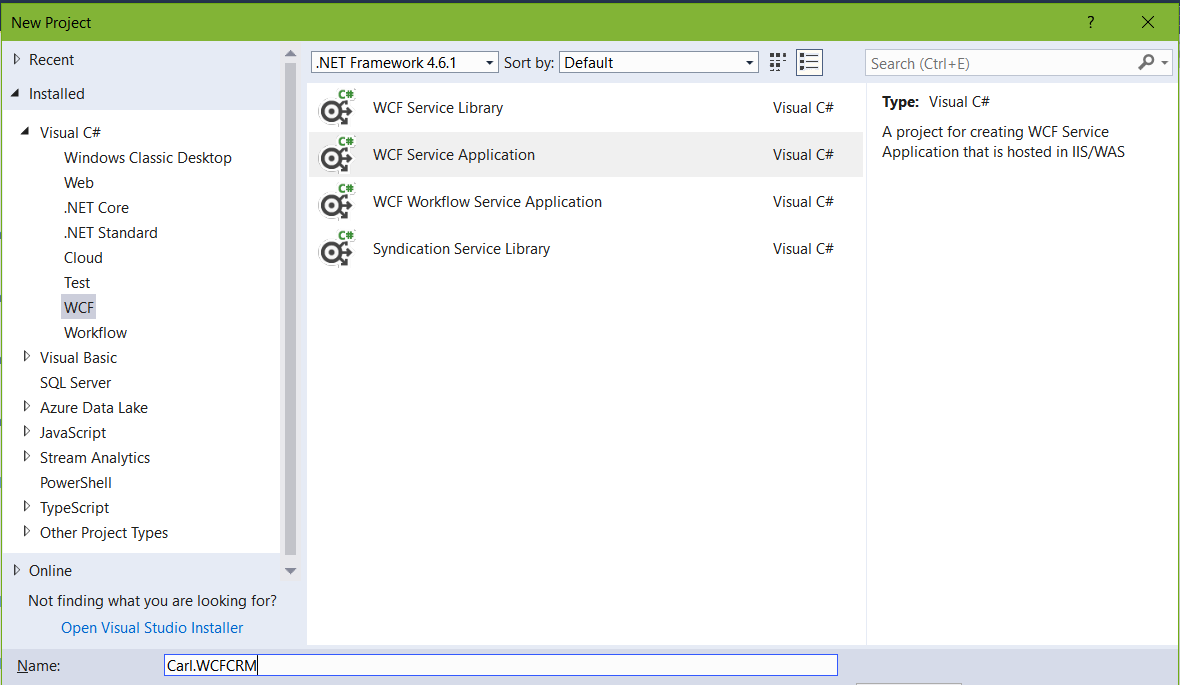
In this example we will have a data contract for a Customer class. Add code:
using System;
using System.Collections.Generic;
using System.Linq;
using System.Runtime.Serialization;
using System.ServiceModel;
using System.ServiceModel.Web;
using System.Text;
namespace Carl.WCFCRM
{
[ServiceContract]
public interface IWCFCRM
{
[OperationContract]
string GetNameByPhoneNumber(string PhoneNumber);
[OperationContract]
Customer GetCustomer(int PhoneNumber);
}
[DataContract]
public class Customer
{
[DataMember]
public string FirstName { get; set; }
[DataMember]
public string LastName { get; set; }
[DataMember]
public string PhoneNumber { get; set; }
}
}
If we run this in a web browser, we can see the service contracts:
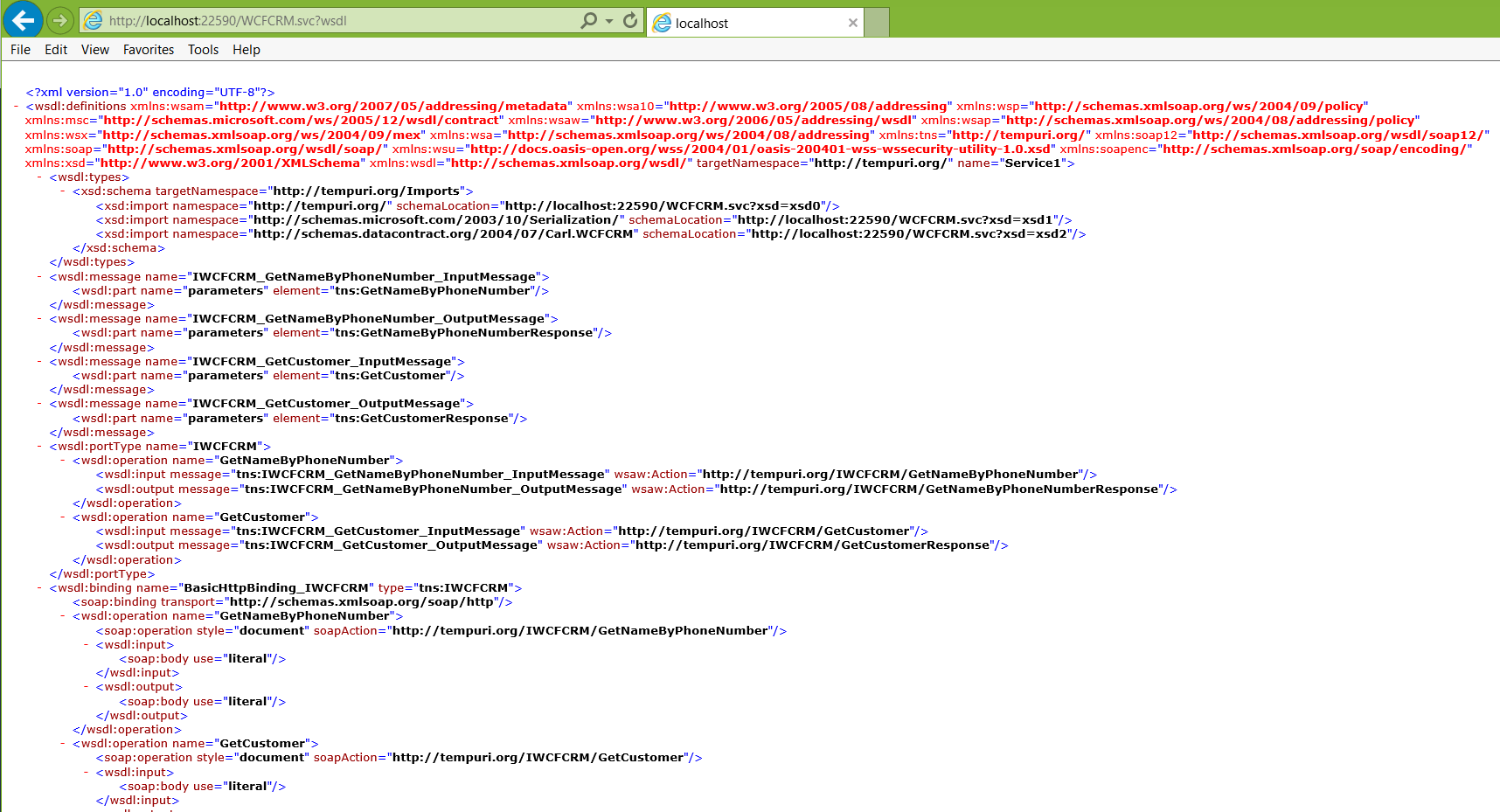
Now we will consume the service. Create a console app. Add a service reference and point to the service above:
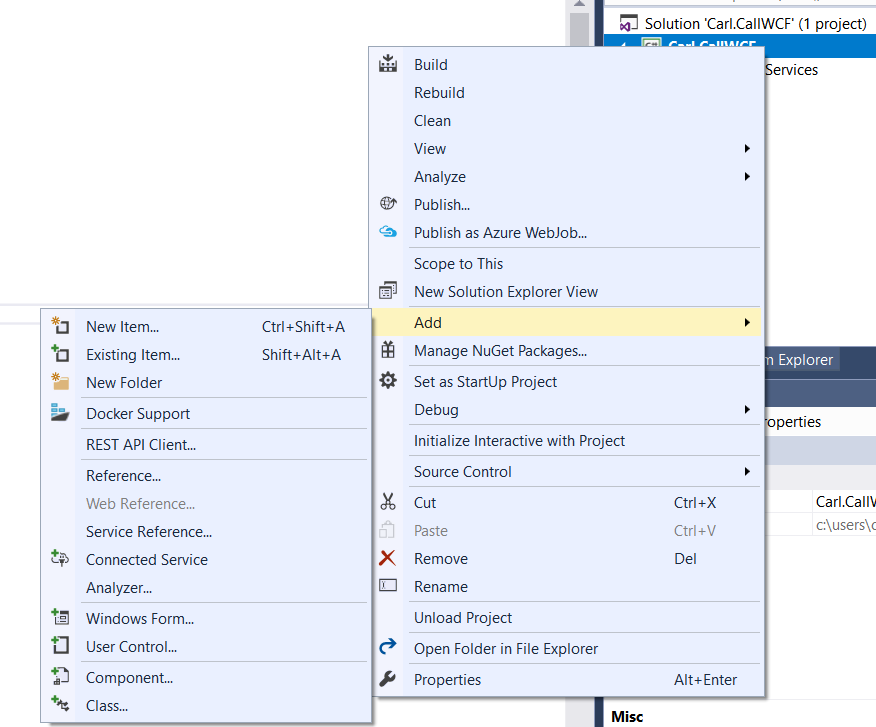
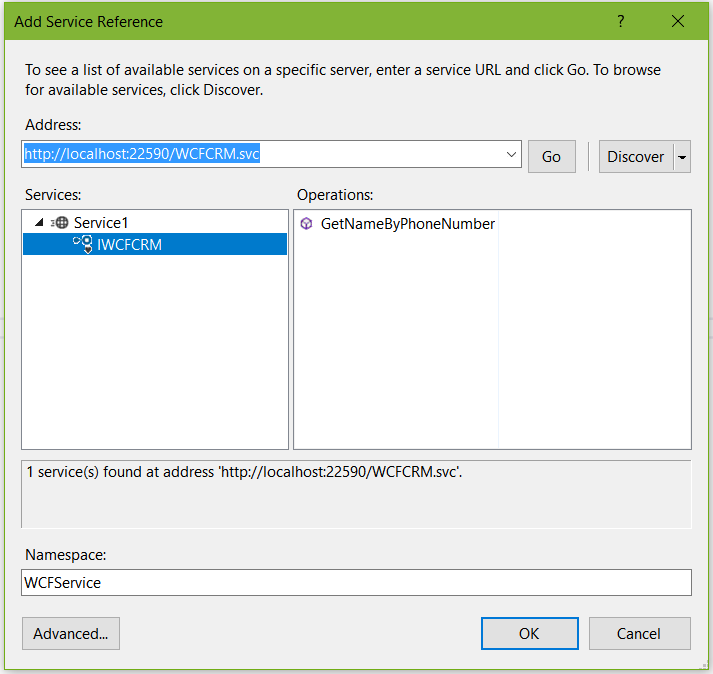
Add some code. You will see the properties:
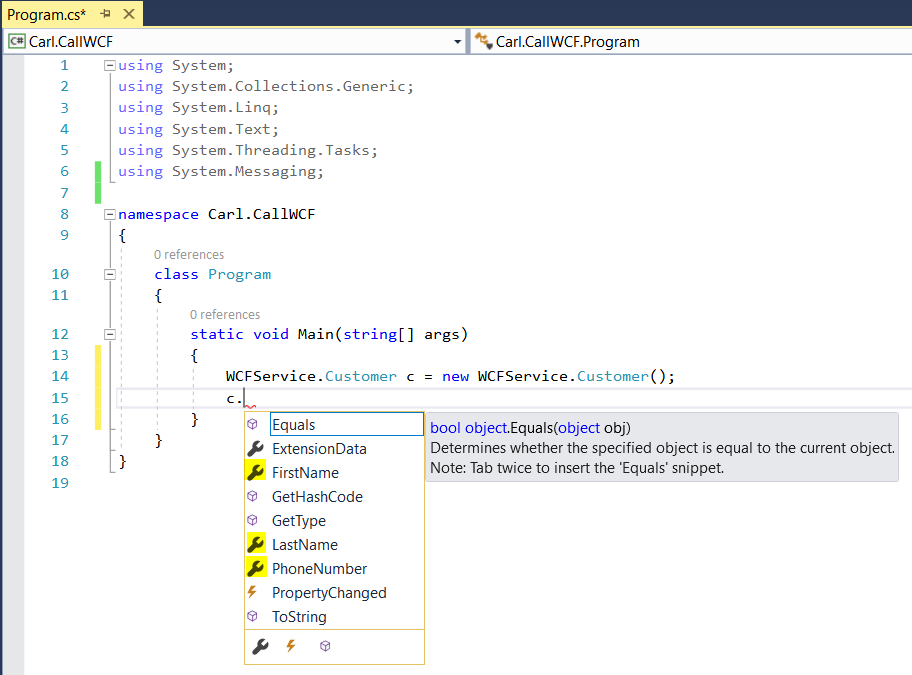
Add code to display the serialized object:
using System;
using System.Collections.Generic;
using System.Linq;
using System.Text;
using System.Threading.Tasks;
using System.Messaging;
using System.IO;
using Carl.CallWCF.WCFService;
using System.Runtime.Serialization;
namespace Carl.CallWCF
{
class Program
{
static void Main(string[] args)
{
Customer c = new Customer();
using (var stream = new MemoryStream())
{
var serializer = new DataContractSerializer(typeof(Customer));
serializer.WriteObject(stream, c);
stream.Seek(0, SeekOrigin.Begin);
var reader = new StreamReader(stream);
Console.WriteLine(reader.ReadToEnd());
Console.ReadLine();
}
}
}
}
This produces the output:

Note the additional properties for DataMember:

- EmitDefaultValue
- IsRequired
- Name
- Order
In our service, if we add:
[DataMember(EmitDefaultValue = false)]
public string PhoneNumber { get; set; }We get a different output:

I AM SPENDING MORE TIME THESE DAYS CREATING YOUTUBE VIDEOS TO HELP PEOPLE LEARN THE MICROSOFT POWER PLATFORM.
IF YOU WOULD LIKE TO SEE HOW I BUILD APPS, OR FIND SOMETHING USEFUL READING MY BLOG, I WOULD REALLY APPRECIATE YOU SUBSCRIBING TO MY YOUTUBE CHANNEL.
THANK YOU, AND LET'S KEEP LEARNING TOGETHER.
CARL



